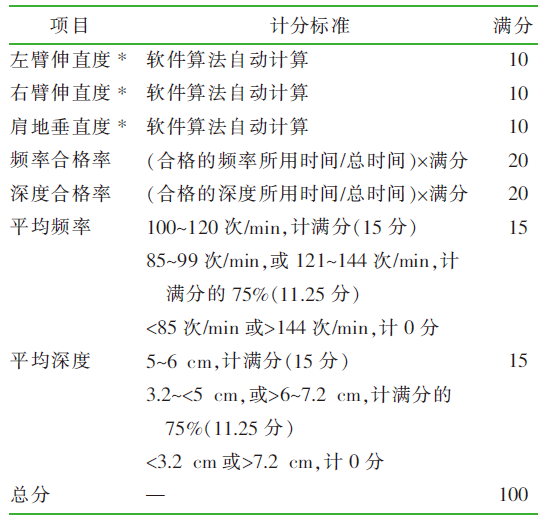| [1] |
Berdowski J, Berg RA, Tijssen JGP, et al. Global incidences of out-of-hospital cardiac arrest and survival rates:systematic review of 67 prospective studies[J]. Resuscitation, 2010, 81(11):1479-1487.
doi: 10.1016/j.resuscitation.2010.08.006
pmid: 20828914
|
| [2] |
American Heart Association. 2020 American Heart Association guidelines for cardiopulmonary resuscitation and emergency cardiovascular care[J]. Circulation, 2020, 142(16 Suppl 2):S337-S604.
|
| [3] |
黄煜, 何庆. 2020 AHA心肺复苏指南解读(六):复苏教育科学和救治系统[J]. 心血管病学进展, 2021, 42(2):188-192.
|
|
Huang Y, He Q. A brief interpretation of 2020 American Heart Association guidelines for cardiopulmonary resuscitation and emergency cardiovascular care(part Ⅵ)-resuscitation education science and systems of care[J]. Adv Cardiovasc Dis, 2021, 42(2):188-192.
|
| [4] |
Xie HS, Luo HW, Lin J, et al. A novel algorithm of fast CPR quality evaluation based on Kinect[J]. J Algorithms Comput Technol, 2020, 14:174830262098366.
|
| [5] |
王均祎, 姜闽英, 王勇力, 等. 心肺复苏反馈装置在住院医师规范化培训临床技能教学中的应用效果[J]. 实用医技杂志, 2021, 28(8):1053-1054.
|
| [6] |
Arrogante O, Ríos-Díaz J, Carrión-García L, et al. Deliberate practice in resuscitation training using a feedback device,and the effects of the physical characteristics of the rescuer on the acquisition and retention of cardiopulmonary resuscitation skills:randomized clinical trial[J]. Int Emerg Nurs, 2021, 58:101037.
doi: 10.1016/j.ienj.2021.101037
|
| [7] |
缪金云, 任玉琴. 节拍器、 计时器引导年轻护士胸外心脏按压在心肺复苏培训中的应用[J]. 当代护士(下旬刊), 2018, 25(10):179-181.
|
| [8] |
Farsi Z, Yazdani M, Butler S, et al. Comparative effectiveness of simulation versus serious game for training nursing students in cardiopulmonary resuscitation:a randomized control trial[J]. Int J Comput Games Technol, 2021, 2021:6695077.
|
| [9] |
García Fierros FJ, Moreno Escobar JJ, Sepúlveda Cervantes G, et al. Virtual CPR:virtual reality mobile application for training in cardiopulmonary resuscitation techniques[J]. Sensors(Basel), 2021, 21(7):2504.
|






